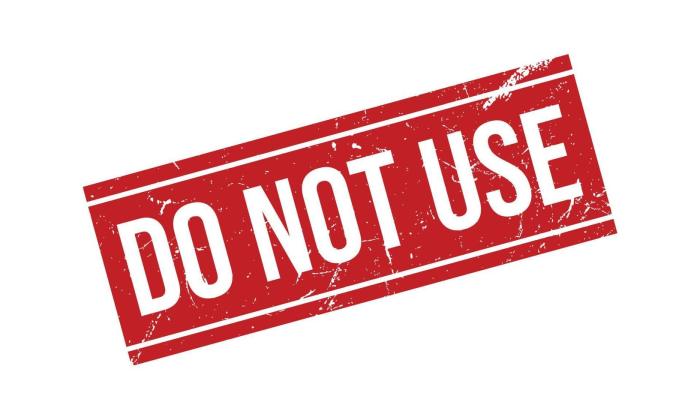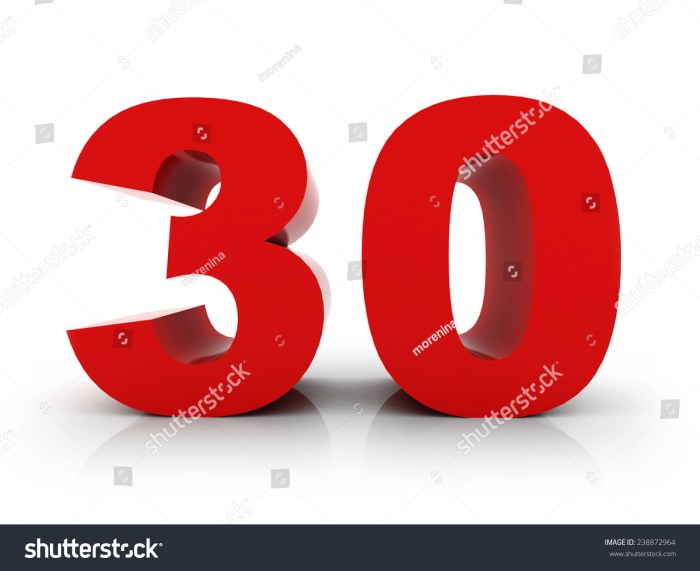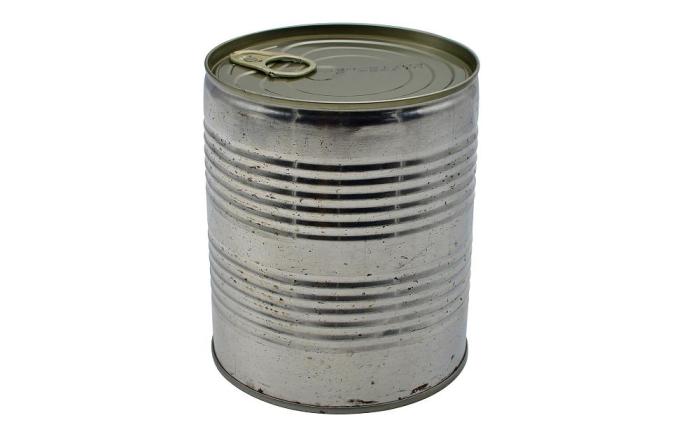How to burn calories effectively is a question many of us grapple with, especially when aiming for a healthier lifestyle. This comprehensive guide dives deep into understanding calorie expenditure, exploring dietary strategies, the importance of physical activity, and the role of lifestyle factors. We’ll cover everything from calculating your daily needs to choosing the right exercises, plus practical tips on tracking your progress.
Get ready to unlock the secrets to sustainable calorie burning and achieve your fitness goals.
We’ll begin by examining the fundamental processes of calorie burning within the body, differentiating between basal metabolic rate and total daily energy expenditure. Then, we’ll delve into the nutritional aspects, exploring the roles of macronutrients and different dietary patterns. Following this, we’ll look at the critical connection between exercise and calorie burning, examining various activities and their impact.
We’ll finish by discussing lifestyle factors and practical tools to track your progress, ensuring a holistic approach to burning calories sustainably and effectively.
Understanding Caloric Expenditure
Understanding how your body uses calories is crucial for achieving and maintaining a healthy weight. This involves more than just counting what you eat; it’s about understanding the complex interplay between food intake and energy expenditure. This deeper dive into caloric expenditure will shed light on the intricate processes at work within your body.Caloric expenditure isn’t a static number; it’s a dynamic process influenced by various factors.
Your body uses calories for a multitude of functions, from basic bodily processes to physical activity. Understanding this intricate system allows you to make informed choices about your diet and lifestyle to optimize your health and well-being.
Basal Metabolic Rate (BMR)
Your Basal Metabolic Rate (BMR) represents the minimum number of calories your body needs to maintain basic functions at rest. These functions include breathing, circulating blood, regulating body temperature, and other essential processes. Factors like age, sex, and muscle mass significantly impact BMR. Individuals with more muscle mass tend to have a higher BMR as muscle tissue requires more energy to maintain than fat tissue.
Total Daily Energy Expenditure (TDEE)
Total Daily Energy Expenditure (TDEE) is the total number of calories your body burns in a 24-hour period, encompassing all activities, from resting to exercising. It’s a crucial factor in weight management, as it represents the balance between calories consumed and calories expended. TDEE is significantly higher than BMR, as it includes the energy used for activities beyond basic bodily functions.
Factors Impacting Caloric Expenditure
Various factors influence your body’s calorie expenditure. Age, sex, activity level, and genetics all play a role in determining your individual energy needs.
- Age: Metabolic rate naturally declines with age, primarily due to a decrease in muscle mass. This is why individuals often need fewer calories as they get older if their activity level remains consistent.
- Sex: Men typically have a higher BMR than women due to differences in muscle mass and body composition.
- Activity Level: Physical activity significantly increases calorie expenditure. Sedentary individuals burn fewer calories than those who are active. Daily routines like walking, climbing stairs, or engaging in sports all contribute to calorie burning.
- Genetics: Genetics play a role in determining your basal metabolic rate. Some individuals naturally have a higher or lower BMR, regardless of lifestyle choices.
Hormones and Metabolism
Hormones regulate various bodily functions, including metabolism and calorie expenditure. Thyroid hormones, for example, play a critical role in controlling the rate at which your body burns calories. Imbalances in hormone levels can affect metabolism and impact weight management.
Methods for Calculating Caloric Needs
Numerous methods exist for estimating caloric needs. Each method considers different factors, and the accuracy varies depending on the individual. The table below compares various methods:
| Method | Description | Strengths | Weaknesses |
|---|---|---|---|
| Harris-Benedict Equation | A classic formula that calculates BMR based on age, sex, height, and weight. | Widely recognized and readily available. | May not be as accurate for all individuals, particularly those with unusual body compositions. |
| Mifflin-St Jeor Equation | An improved formula that incorporates more factors and is often considered more accurate than the Harris-Benedict Equation. | Generally considered more accurate than Harris-Benedict. | Still reliant on self-reported data and may not account for specific physiological conditions. |
| Katch-McArdle Equation | A formula that considers lean body mass (LBM) in addition to age, sex, height, and weight. | More accurate for individuals with significant muscle mass variations. | Requires accurate assessment of LBM, which can be challenging. |
Dietary Strategies for Calorie Burning
Fueling your body effectively is crucial for successful calorie management. Understanding how different nutrients impact your metabolism and energy expenditure is key to achieving your fitness goals. This section dives into the interplay between macronutrients, dietary patterns, and calorie burning, providing practical strategies for a balanced approach.Macronutrients and Calorie Expenditure play a significant role in your metabolic rate.
Different macronutrients (carbohydrates, proteins, and fats) have distinct effects on the body’s energy expenditure. Carbohydrates are the primary source of energy, providing quick fuel for physical activity. Proteins are essential for building and repairing tissues, and while not directly a primary energy source, they have a higher thermic effect (TEF) than carbohydrates or fats, meaning your body burns more calories digesting them.
Fats, though often demonized, are crucial for hormone production and cell function. They also have a lower TEF than proteins. A balanced intake of all three macronutrients is essential for optimal metabolic function and sustainable weight management.
Impact of Dietary Patterns on Metabolism
Various dietary patterns influence metabolism in different ways. Low-carbohydrate diets often lead to a decrease in insulin levels, potentially increasing fat burning. However, the long-term effects on overall health and sustainability need careful consideration. High-protein diets can boost metabolism due to the higher TEF of protein. Vegetarian or vegan diets, when properly planned, can be effective for calorie management, but careful attention to nutrient adequacy is necessary to avoid deficiencies.
The impact of different dietary patterns on metabolic rate is complex and varies greatly between individuals. A personalized approach tailored to your specific needs and goals is often recommended.
Creating a Balanced Meal Plan
A balanced meal plan supports calorie burning by providing the necessary nutrients without excessive calories. Prioritize whole, unprocessed foods over processed options. Include a variety of fruits, vegetables, lean proteins, and whole grains in your diet. Portion control is critical, as even healthy foods can contribute to weight gain if consumed in excess. Aim for a balanced intake of carbohydrates, proteins, and healthy fats.
This ensures your body receives the energy it needs while minimizing calorie surplus.
Importance of Portion Control and Mindful Eating
Portion control is vital for calorie management. Using smaller plates and bowls can help you visually manage portion sizes. Mindful eating involves paying attention to your body’s hunger and fullness cues, eating slowly, and savoring your food. Avoid distractions like screens or work while eating. This mindful approach helps you to eat only when hungry and stop when full, reducing the likelihood of overeating.
Healthy Snacks for Calorie Burning
Healthy snacks can help curb cravings and provide sustained energy. Examples include fruits like apples or berries, vegetables like carrots or celery with hummus, or a handful of nuts. These snacks are lower in calories and higher in nutrients compared to processed options. They can be a helpful strategy for preventing overeating between meals.
Comparison of Different Diets
Various diets, such as the Mediterranean diet, the DASH diet, and ketogenic diet, aim to manage calories and promote weight loss. The Mediterranean diet emphasizes whole foods, fruits, vegetables, and healthy fats. The DASH diet focuses on reducing sodium intake and increasing potassium. The ketogenic diet significantly restricts carbohydrates, leading to a shift in the body’s energy source to fats.
The effectiveness of each diet depends on individual needs, preferences, and adherence. Consulting with a registered dietitian or healthcare professional is crucial before adopting any restrictive dietary approach.
Calorie Content of Common Foods
| Food | Approximate Calories (per serving) |
|---|---|
| Apple (medium) | 95 |
| Banana (medium) | 105 |
| Chicken Breast (4oz) | 140 |
| Brown Rice (1 cup cooked) | 200 |
| Oatmeal (1 cup dry) | 150 |
| 1 cup Milk | 100 |
| 1 slice whole wheat bread | 70 |
Note: Calorie counts may vary based on preparation methods and specific ingredients.
Physical Activity and Calorie Burning: How To Burn Calories
Beyond the crucial role of diet, physical activity significantly impacts calorie expenditure. Understanding the relationship between exercise and calorie burning is key to achieving and maintaining a healthy weight. Different types and intensities of exercise affect calorie expenditure in various ways, impacting not only immediate energy use but also long-term metabolic processes.
Correlation Between Exercise Intensity and Calorie Expenditure
The intensity of exercise directly correlates with the number of calories burned. Higher intensity activities, like sprinting or HIIT workouts, necessitate more energy, leading to a greater calorie expenditure compared to low-intensity activities like walking. This difference stems from the body’s increased demand for oxygen and energy during more strenuous exercises.
Various Exercises Promoting Calorie Burning
A wide array of exercises contribute to calorie burning, varying significantly in their intensity and effectiveness. Categorizing these activities based on intensity allows for tailored exercise plans to meet individual needs and goals.
- Low Intensity: Walking, light jogging, swimming at a leisurely pace, cycling at a slow speed. These activities are excellent for beginners or those seeking a gentler approach to exercise, but the calorie expenditure is typically lower compared to higher intensity exercises.
- Moderate Intensity: Brisk walking, jogging, cycling at a moderate pace, dancing, water aerobics. These activities elevate the heart rate and breathing, leading to a noticeable increase in calorie expenditure compared to low-intensity exercises.
- High Intensity: Sprinting, HIIT workouts, interval training, plyometrics. These activities push the body to its limits, resulting in significant calorie burning both during and after the workout. These are often ideal for individuals looking to maximize calorie expenditure in a shorter time frame.
Importance of Exercise Duration and Frequency
Both the duration and frequency of exercise play a vital role in effective calorie burning. A longer workout, within the individual’s capacity, will lead to a greater overall calorie expenditure. Consistent workouts, performed regularly, allow for sustained calorie burning and promote long-term weight management.
Role of Different Exercise Types in Calorie Expenditure
Different types of exercise contribute to calorie burning in distinct ways. Cardiovascular exercises like running or cycling primarily burn calories during the activity, whereas strength training builds muscle mass. Increased muscle mass elevates the basal metabolic rate (BMR), leading to a higher calorie expenditure even when at rest.
Metabolic Afterburn (EPOC)
Metabolic afterburn, or Excess Post-exercise Oxygen Consumption (EPOC), refers to the elevated calorie expenditure that continues after a workout. High-intensity exercises often result in a more pronounced EPOC effect, meaning the body continues burning calories at a higher rate than normal for a period after the exercise ends. This effect contributes to long-term calorie burning.
Calorie Burn Rates for Different Exercises
| Exercise | Estimated Calorie Burn (per 30 minutes) |
|---|---|
| Walking (3 mph) | 150-200 |
| Jogging (5 mph) | 250-350 |
| Swimming | 200-400 (depending on stroke and intensity) |
| Cycling (moderate) | 200-300 |
| HIIT Workout | 300-500+ |
Workout Routines for Calorie Burning
| Workout Routine | Exercise | Sets | Reps | Rest (minutes) |
|---|---|---|---|---|
| Full Body Workout 1 | Squats | 3 | 10-12 | 1 |
| Push-ups | 3 | 8-10 | 1 | |
| Rows | 3 | 10-12 | 1 | |
| Lunges | 3 | 10-12 per leg | 1 | |
| Cardio & Strength Combo 2 | Running | 1 | 30 minutes | – |
| Dumbbell Bench Press | 3 | 8-10 | 1 | |
| Dumbbell Rows | 3 | 10-12 | 1 | |
| Plank | 3 | Hold for 30-60 seconds | – |
Lifestyle Factors Influencing Calorie Burning
Beyond diet and exercise, numerous lifestyle factors play a crucial role in our calorie expenditure. Understanding these factors allows for a more holistic approach to weight management and overall well-being. These factors often interact, influencing each other in complex ways, making a well-rounded approach essential.
Sleep Quality and Metabolic Rate
Adequate sleep is vital for maintaining a healthy metabolic rate. Studies show that sleep deprivation can negatively impact hormones like leptin and ghrelin, which regulate appetite and energy expenditure. Insufficient sleep can lead to increased hunger and cravings, potentially contributing to weight gain. Conversely, good sleep quality allows the body to repair and restore, optimizing metabolic processes and promoting calorie burning.
Aiming for 7-9 hours of quality sleep per night can positively influence your metabolic rate.
Stress Levels and Calorie Burning
Chronic stress triggers the release of cortisol, a hormone that can increase appetite and promote the storage of fat, particularly around the abdomen. Elevated cortisol levels also impact metabolic processes, potentially reducing the body’s ability to burn calories efficiently. The body’s response to stress is often accompanied by increased cravings for high-calorie foods, leading to potential weight gain.
Managing stress effectively is crucial for maintaining a healthy metabolism and supporting calorie burning.
Methods to Reduce Stress and Improve Sleep Quality
Effective stress reduction and improved sleep quality are interconnected. Mindfulness practices, yoga, and meditation can help calm the mind and reduce stress levels. Establishing a consistent sleep schedule, creating a relaxing bedtime routine, and ensuring a dark, quiet, and cool sleep environment can promote better sleep quality. These practices can lead to a more stable metabolic rate, and ultimately, support calorie burning.
Hydration and Metabolic Processes
Adequate hydration is essential for numerous bodily functions, including metabolic processes. Water plays a crucial role in transporting nutrients, removing waste products, and regulating body temperature. Proper hydration can help optimize metabolic functions, potentially leading to increased calorie burning. Staying well-hydrated can also help manage appetite and cravings. Carry a water bottle and sip water throughout the day to ensure you are properly hydrated.
Environmental Factors and Metabolism
Environmental factors can significantly influence metabolism. Exposure to extreme temperatures, both hot and cold, can impact calorie expenditure. Cold temperatures can increase metabolic rate, while prolonged exposure to heat can decrease it. Similarly, the environment’s air quality, especially pollutants, can also impact metabolic health. Maintaining a healthy and supportive environment can contribute to a more efficient metabolic rate.
Reducing exposure to environmental stressors, such as pollution, can also contribute to a healthy metabolism.
Summary of Lifestyle Habits Supporting Calorie Burning
| Lifestyle Habit | Impact on Calorie Burning |
|---|---|
| Sufficient Sleep (7-9 hours) | Improved metabolic rate, reduced cravings |
| Stress Management (e.g., mindfulness, yoga) | Reduced cortisol levels, stable metabolism |
| Hydration (adequate water intake) | Optimized metabolic functions, appetite control |
| Temperature Regulation (avoid extreme temperatures) | Maintain a stable metabolic rate |
| Environmental Support (reduced pollution exposure) | Improved metabolic health |
Tools and Resources for Calorie Tracking

Staying on top of your calorie intake and expenditure is crucial for effective weight management. Knowing precisely how many calories you’re consuming and burning allows you to adjust your habits to achieve your goals. This section will delve into various tools and resources available for calorie tracking, highlighting their benefits, drawbacks, and how to use them effectively.Accurate calorie tracking empowers you to make informed decisions about your diet and exercise.
By meticulously recording your food and activity, you gain valuable insights into your current habits and identify areas for improvement. This awareness fosters a deeper understanding of how your choices impact your overall health and well-being.
Burning calories is all about finding activities you enjoy, right? Sometimes, though, feeling overwhelmed by the whole process can make it harder to stick to a plan. If you’re feeling a bit lost in the sea of fitness advice, don’t worry, it’s completely normal! Check out this helpful guide on navigating those feelings, dont worry its alright feel lost 25 , and remember that small, consistent steps are key to long-term success.
Ultimately, finding the right balance of exercise and healthy eating will help you reach your calorie-burning goals.
Calorie Tracking Apps and Websites
Numerous apps and websites are designed to simplify the calorie tracking process. These tools often offer extensive databases of foods, allowing you to quickly and easily log your meals. They also frequently integrate with fitness trackers, providing a holistic view of your activity levels.
- MyFitnessPal is a widely used app that provides a comprehensive food database and detailed activity tracking features. It allows users to create personalized plans, set goals, and receive detailed reports on their progress. MyFitnessPal’s extensive food database is a valuable asset for accurately tracking calories and nutrients.
- Lose It! is another popular app known for its user-friendly interface and extensive food database. Its strengths lie in its intuitive design and ability to help users create sustainable habits for weight loss and maintenance. Users can customize their dietary needs and goals within the app.
- Cronometer is a more advanced calorie tracking app, providing detailed nutritional information beyond just calories. This detailed nutritional breakdown can be beneficial for those with specific dietary needs or who are interested in tracking micronutrients in addition to calories. Users can also import their food data from other sources for greater convenience.
Importance of Accurate Calorie Tracking
Precise calorie tracking is essential for effective weight management. It helps you understand your energy balance – the difference between calories consumed and calories burned. This knowledge allows you to make informed decisions about your diet and exercise routine, ultimately contributing to healthier outcomes. For instance, if you consistently consume more calories than you burn, weight gain is likely.
Conversely, if you consistently burn more calories than you consume, weight loss is possible. Accurate tracking enables you to identify any discrepancies and adjust your habits accordingly.
Benefits and Drawbacks of Calorie Tracking Methods
Calorie tracking methods offer numerous benefits but also have drawbacks. Apps and websites provide convenient ways to log food and activity, fostering greater awareness of dietary choices. However, the reliance on pre-populated databases can sometimes lead to inaccuracies if the database doesn’t include the specific food item.
Tips for Effective Calorie Tracking
Effective calorie tracking requires a combination of discipline and attention to detail. Be consistent in logging all food and beverages, even small portions. Also, ensure accuracy by using measuring tools like food scales and measuring cups, as discussed in a later section.
Comparison of Calorie Tracking Apps
The following table compares and contrasts some popular calorie tracking apps.
| App | Pros | Cons |
|---|---|---|
| MyFitnessPal | Extensive food database, detailed activity tracking, user-friendly interface | May not be suitable for users with specific dietary needs, potentially overwhelming for beginners. |
| Lose It! | Intuitive design, customizable dietary plans, user-friendly interface | May lack some advanced features found in other apps, potentially less comprehensive than MyFitnessPal’s food database. |
| Cronometer | Detailed nutritional information, import data from other sources | Can be more complex to use, may not be as user-friendly as other apps for basic users. |
Using a Food Scale and Measuring Cups Accurately
Accurate portion control is vital for accurate calorie tracking. Using a food scale and measuring cups is essential for precise measurements, preventing overestimation or underestimation of calorie intake. For instance, a 100-gram portion of pasta can vary significantly in calorie content compared to a 150-gram portion.
Burning calories doesn’t have to be a chore, especially when juggling work and family. Finding efficient ways to manage your time, like the 6 time saving tips for working parents here , can actually help you sneak in more physical activity. Whether it’s fitting in a quick workout during a child’s nap or using commutes to walk or cycle, small changes can make a big difference in your calorie burn throughout the day.
- Food Scale: Place the food item directly onto the scale and note the weight in grams. Refer to food labels for conversion to ounces if needed.
- Measuring Cups: Ensure the measuring cups are clean and dry. Level off the ingredients with a straight edge to avoid overfilling.
Accurate measurements are key to maintaining a balanced calorie intake.
Addressing Potential Challenges and Considerations
Embarking on a journey to burn calories effectively requires understanding not only the methods but also the potential obstacles. This section delves into common pitfalls, strategies to overcome them, and crucial considerations for long-term success. By proactively addressing potential challenges, you can navigate the process with greater confidence and achieve your goals sustainably.
Common Mistakes in Calorie Burning Efforts
Many individuals make errors in their calorie-burning endeavors, often hindering their progress. These mistakes can stem from a lack of understanding, unrealistic expectations, or inconsistent application of strategies.
Burning calories is all about finding activities you enjoy. Running, swimming, or even just dancing around your living room can help. But before you dive headfirst into a new relationship, remember these key points: consider your past experiences and what worked and didn’t work, and be mindful of the signs that things are not right. This can be as important as finding the right workout routine.
For more tips on navigating relationships, check out this insightful article on 8 things to remember before moving on to the next relationship. Ultimately, the key to success, whether in fitness or love, is being aware of yourself and your needs. Now back to those calorie-burning tips!
- Setting Unrealistic Goals: Aiming for drastic and rapid weight loss often leads to frustration and disappointment. Sustainable weight management involves gradual changes over time, focusing on consistent effort rather than quick fixes. For instance, a weekly loss of 1-2 pounds is generally considered healthy and sustainable.
- Ignoring Nutritional Needs: Focusing solely on exercise while neglecting dietary considerations can hinder progress. Calorie burning through exercise is often offset by excessive calorie intake, negating the effects of physical activity. A balanced approach that combines proper nutrition and exercise is essential.
- Lack of Consistency: Intermittent exercise routines or inconsistent dietary habits can significantly impact calorie-burning efforts. A consistent and sustained approach, integrating both exercise and dietary modifications, is critical for achieving long-term results. For example, daily walks, even for short durations, can be highly effective if maintained.
- Poor Exercise Selection: Choosing exercises that don’t align with individual fitness levels or goals can lead to injury or discouragement. Selecting activities that are enjoyable and appropriate for fitness level can significantly improve adherence and motivation.
Strategies to Overcome Obstacles
Addressing common obstacles requires proactive strategies and a personalized approach. Flexibility, patience, and a supportive environment are key to overcoming these challenges.
- Set Realistic Goals: Establish achievable targets for weight loss or calorie burning, ensuring they align with overall health and fitness goals. Gradually increase the intensity and duration of exercise over time, avoiding burnout or injury.
- Prioritize Balanced Nutrition: Focus on consuming a diet rich in fruits, vegetables, lean proteins, and whole grains. Control portion sizes and limit processed foods, sugary drinks, and excessive fats to support calorie management. Understanding portion control is key to achieving dietary goals.
- Cultivate Consistent Habits: Establish a regular exercise routine and stick to a consistent meal schedule. Consistency is crucial for building healthy habits and achieving lasting results. Consider using a calendar or planner to track progress and maintain accountability.
- Seek Professional Guidance: Consult with a healthcare professional or registered dietitian for personalized advice and support. They can assess individual needs, provide tailored recommendations, and monitor progress, ensuring safety and effectiveness.
Importance of Professional Consultation
Consulting with a healthcare professional or registered dietitian is crucial for safe and effective calorie-burning strategies. They can provide personalized advice and guidance, mitigating potential risks.
- Assessing Individual Needs: Healthcare professionals can assess individual health conditions, medical history, and current fitness levels to recommend appropriate calorie-burning strategies.
- Providing Personalized Plans: Dietitians can design personalized meal plans that align with individual nutritional needs and calorie goals. They can also educate on food choices that support calorie burning.
- Monitoring Progress and Safety: Regular check-ups and monitoring are essential to ensure safety and effectiveness. This helps prevent potential health risks associated with extreme calorie restriction.
Risks of Extreme Calorie Restriction
Extreme calorie restriction can pose significant health risks. It’s essential to understand the potential consequences and strive for gradual and sustainable changes.
- Nutrient Deficiencies: Restricting calorie intake excessively can lead to deficiencies in essential vitamins and minerals, impacting overall health and well-being.
- Metabolic Slowdown: Rapid weight loss can trigger a metabolic slowdown, making it more challenging to burn calories and maintain weight loss in the long term.
- Hormonal Imbalances: Extreme calorie restriction can disrupt hormonal balance, affecting mood, energy levels, and overall health.
Gradual and Sustainable Changes for Long-Term Results
Gradual and sustainable changes are key to achieving long-term results. A gradual approach allows the body to adapt and maintain healthy habits.
- Focus on Consistency: Prioritize consistent exercise and dietary habits over short-term, drastic changes. This ensures sustainable results.
- Listen to Your Body: Pay attention to hunger cues and body signals, adjusting the plan as needed. Overexertion can lead to injury or burnout.
- Celebrate Milestones: Acknowledge and reward progress, maintaining motivation and encouraging long-term adherence to the plan. This helps maintain positive momentum.
Importance of Listening to Your Body
Listening to your body is essential for navigating the calorie-burning process successfully. It involves understanding and responding to internal cues.
- Recognize Hunger Cues: Pay attention to hunger cues, eating when genuinely hungry and avoiding unnecessary snacking.
- Acknowledge Fatigue: Adjust exercise intensity or duration when feeling overly fatigued, preventing injuries and burnout.
- Prioritize Rest and Recovery: Adequate sleep and rest are crucial for physical and mental well-being. This allows the body to repair and recover effectively.
Illustrative Examples
Putting theory into practice is key to achieving sustainable calorie-burning goals. This section offers concrete examples of daily meal plans, workout routines, calorie tracking strategies, and lifestyle changes, providing a roadmap for anyone looking to make lasting improvements. These examples are not prescriptive, but rather illustrations of effective approaches that can be adapted to individual needs and preferences.
Sample Daily Meal Plan for Calorie Burning, How to burn calories
A balanced diet is crucial for supporting calorie burning and overall health. This sample meal plan focuses on nutrient-dense foods, portion control, and timing to optimize calorie expenditure and satiety.
- Breakfast (350 calories): Oatmeal with berries and a sprinkle of nuts, a small glass of milk.
- Lunch (450 calories): A large salad with grilled chicken or fish, a whole-wheat roll, and a small portion of vinaigrette dressing. This provides protein for satiety and complex carbohydrates for sustained energy.
- Snack (150 calories): Greek yogurt with fruit and a handful of almonds.
- Dinner (500 calories): Baked salmon with roasted vegetables (broccoli, carrots, and sweet potatoes). Lean protein and colorful vegetables are key components.
- Evening Snack (100 calories): A small handful of mixed nuts and seeds.
Sample Workout Routine Focused on Calorie Burning
A comprehensive workout routine combines cardiovascular exercises, strength training, and flexibility to maximize calorie expenditure and improve overall fitness. Consistency is key for achieving long-term results.
- Cardio (30 minutes): Brisk walking, jogging, cycling, or swimming. Choose an activity you enjoy to maintain motivation.
- Strength Training (30 minutes): Exercises targeting major muscle groups (squats, lunges, push-ups, rows, and planks). This builds muscle mass, which boosts metabolism and burns more calories even at rest.
- Flexibility (15 minutes): Yoga, Pilates, or stretching. This helps maintain flexibility, prevent injuries, and improve overall well-being.
Strategy for Tracking Calories and Adjusting Diet
Monitoring calorie intake and adjusting your diet accordingly is essential for weight management. This strategy involves careful tracking and gradual adjustments to ensure a sustainable approach.
- Calorie Tracking App or Journal: Use a reliable app or journal to record all food and drink consumed, including portion sizes. Accuracy is crucial for effective tracking.
- Understanding Calorie Needs: Determine your Basal Metabolic Rate (BMR) and activity level to estimate your daily calorie needs. This provides a baseline for adjustments.
- Gradual Dietary Adjustments: Don’t make drastic changes. Focus on gradually reducing calorie intake if needed, while ensuring sufficient intake of essential nutrients.
- Professional Guidance: Consult a registered dietitian or nutritionist for personalized dietary advice. They can help you create a sustainable eating plan that meets your individual needs and goals.
Incorporating Lifestyle Changes into a Daily Routine
Incorporating lifestyle changes into your daily routine can significantly impact calorie burning and overall health.
- Increased Physical Activity: Incorporate more physical activity into your daily routine, such as taking the stairs instead of the elevator, walking during breaks, or parking further away from your destination.
- Mindful Eating: Pay attention to your hunger and fullness cues, eat slowly, and avoid distractions while eating. This promotes better digestion and helps you avoid overeating.
- Sufficient Sleep: Aim for 7-9 hours of quality sleep per night. Sleep deprivation can disrupt hormones that regulate appetite and metabolism, making it harder to lose weight.
- Stress Management: Practice stress-reducing techniques, such as meditation, deep breathing exercises, or spending time in nature. Stress can lead to overeating and hinder weight loss efforts.
Conclusion

In conclusion, burning calories effectively is a multifaceted process requiring a holistic approach. Understanding your body’s unique needs, combining smart dietary choices with regular physical activity, and adopting healthy lifestyle habits are key to success. Remember, gradual and sustainable changes are crucial for long-term results. This guide has provided a roadmap to help you navigate the complexities of calorie burning and embark on your journey towards a healthier you.
By implementing the strategies Artikeld, you can effectively burn calories and reach your weight management goals.










